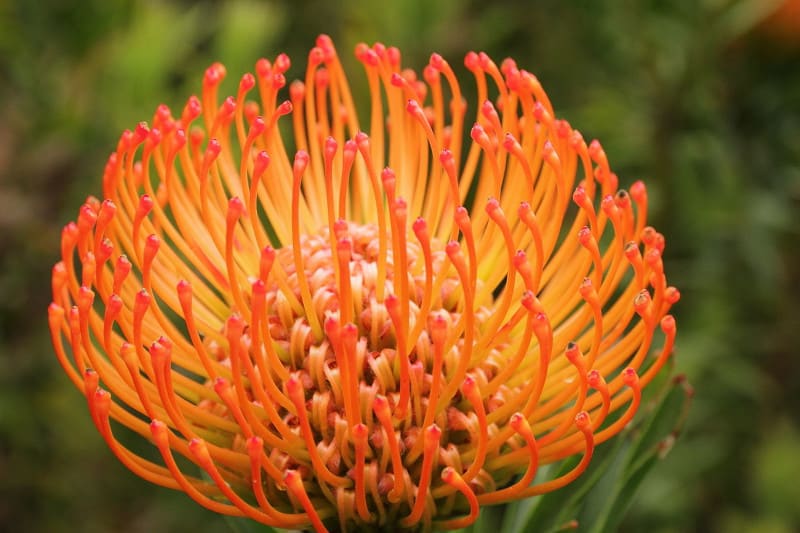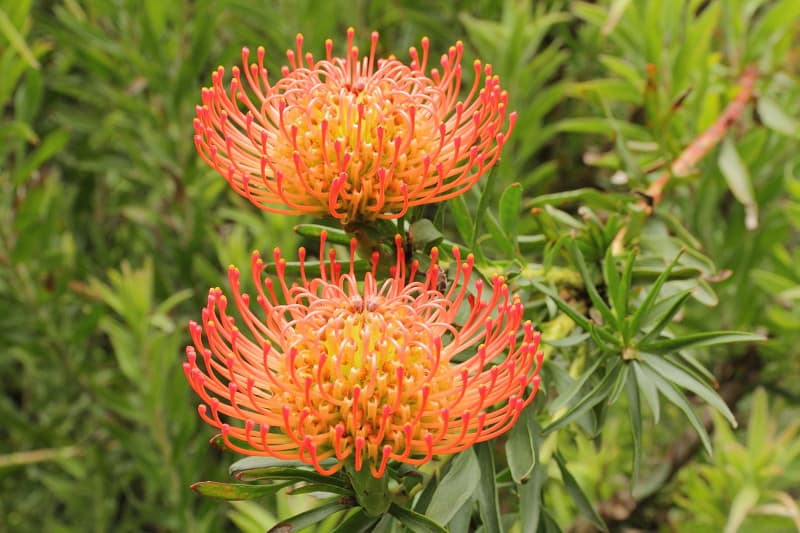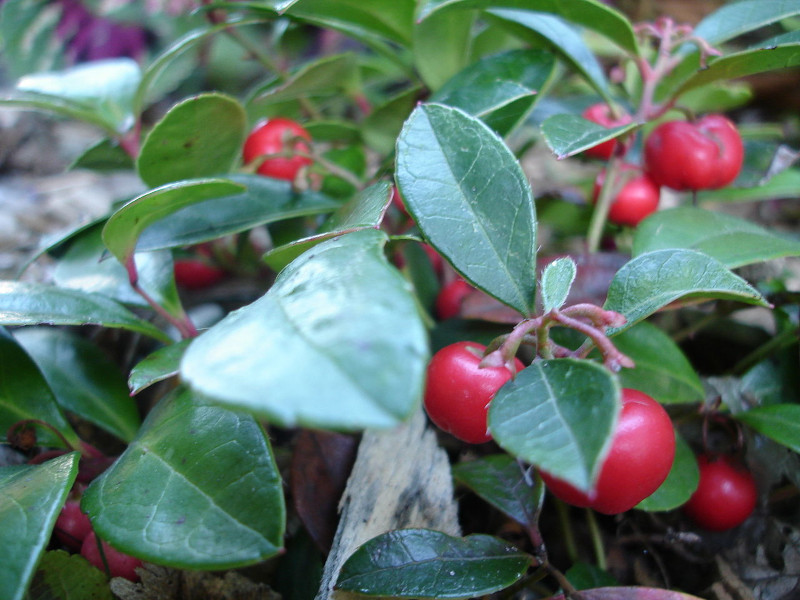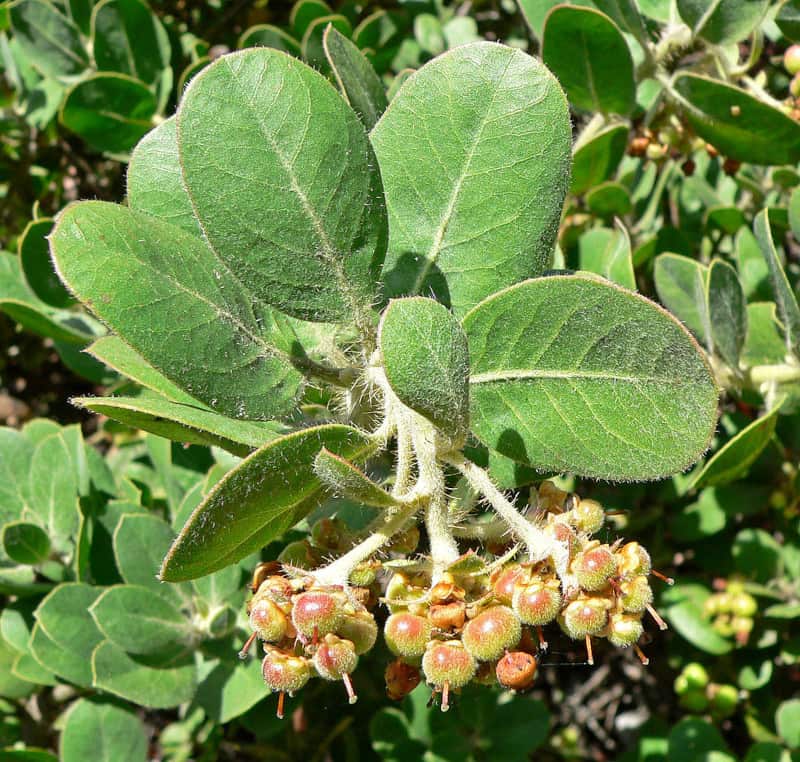
Wheel Flower Facts
- This stunning product of evolution most frequently goes by the deceptively simple common name of the Wheel Flower. It has another english language name, though. That’s the term of the Catherine-wheel pincushion. In Afrikaans it’s called waterluisie.
- But, among scientific professionals, it’s better known by its technical moniker. But that’s a hard term to pronounce for most laymen. That’s because it bears the official title of the Leucospermum catherinae. By either of these, though, it’s a work of art.
- This wonder of Nature received that tongue-twisting formal title due to the work of Edwin Percy Phillips. He wasn’t the first to report on it. Despite that, the South African botanist recorded the first official recognition of it as a separate and distinct species.
- Sadly, the Wheel Flower appears to be dwindling in numbers in the wild. It also has a highly fragmented concentration. Both these lamentable conditions seem to hold true throughout the entirety of its range. The IUCN therefore lists it as Vulnerable.
- Habitat degradation and loss pose considerable threats to it, given that fragmented range. Both these arise due to the actions of humans. Its now also faces another danger created by the actions of man. That’s because it’s now vulnerable to climate change.
Related Articles

Wheel Flower Physical Description
The stunning Wheel Flower is one of those plants that capture the imagination. Unlike some varities of flora, though, it does so for more than one reason. It combines a distinctive appearance with sheer beauty, for one. Yet it’s also a relatively large species.
It develops as a comparatively large, upright shrub. It also evolved as evergreen in nature. At full growth, individuals specimens sometimes attain heights of as much as 13 ft (4 m). Subsequent to this, though, most members of the species begin to spread outward.
This marvelous Angiosperm grows from a single, thick trunk at the base. The many branches each plant produces generally grow upright. These average 0.2 – 0.3 in (5 – 8 mm) in thickness. Intriguingly, each of them also manifests a covering of a thin, downy nature.
The leaves of the beautiful species develop at the end of a relatively thick stalk. This grows in an inverted state, and with a lance-like shape. This foliage averages 3.5 – 5.1 in (9 – 13 cm) in length. This growth further has a wdith that ranges from 0.4 – 1.0 in (1 – 2.5 cm).
Yet it’s clearly the blooms of the breathtaking Wheel Flower that rightfully garner the most attention. They become disk-shaped with maturity, and reach an impressive typical width of 5.9 in (15 cm). Its general structure, though, cloely resembles long, thin curved needles.
Their coloring creates a magnificent treat for the eyes. Each thin needle-like bract presents a vivid orange shade along its length. The tip of each displays a contrasting dark orange hue. These grow out from the base, before curving back inward to create a striking shape.
- Kingdom: Plantae
- Phylum: Tracheophytes
- Class: Eudicots
- Order: Proteales
- Family: Proteaceae
- Genus: Leucospermum
- Species: L. catherinae
Wheel Flower Distribution, Habitat, and Ecology
Unfortunately for those who love Nature, the Wheel Flower evolved as native to a very limited range. The region of the globe where that zone of habitation lies, however, likely comes as no surprise. That’s since this botanical marvel is native to the continent of Africa.
Even there, though, it only appears in a very small portion. All known specimens of the plant grow only in a section of the country of South Africa. More precisely, it lives in a region to the southwest of the Western Cape province. Yet even there it lives in isolated groups.
In the few regions where it does appear, though, it displays very decided preferences for its choice of habitat. It also displays a strong favoritism for moist areas. These mostly consist of such regions as either level sandy flats or weathered table mountain sandstone.
It also frequently likes to make its home along the banks of permanent streams. The stunning species further displays a preference for a range of altitudes. That’s true since all known examples of it grow at altitudes ranging from 2,000 – 3,900 ft (610 – 1,189 m).
The native climate of the Wheel Flower remains nearly Mediterranean in nature. This includes copious rainfall, hot summers, and moderately cold winters. The marvelous flora tolerates temperatures down to the freezing point, but does not do well below that point.
Although many bees are attracted to it, they’re not its principal pollinators. It actually achieves the majority of its pollination via the actions of birds. They’re bodies collect the pollen when they feed on the nectar, and they later transfer it to the next plant they visit.
Species Sharing Its Range
Check out our other articles on 7 Stunning Pacific Ocean Species, Bluespotted Ribbontail Ray, Uluru, Common Bottlenose Dolphin, Eastern Tiger Swallowtail, Nicobar Pigeon


